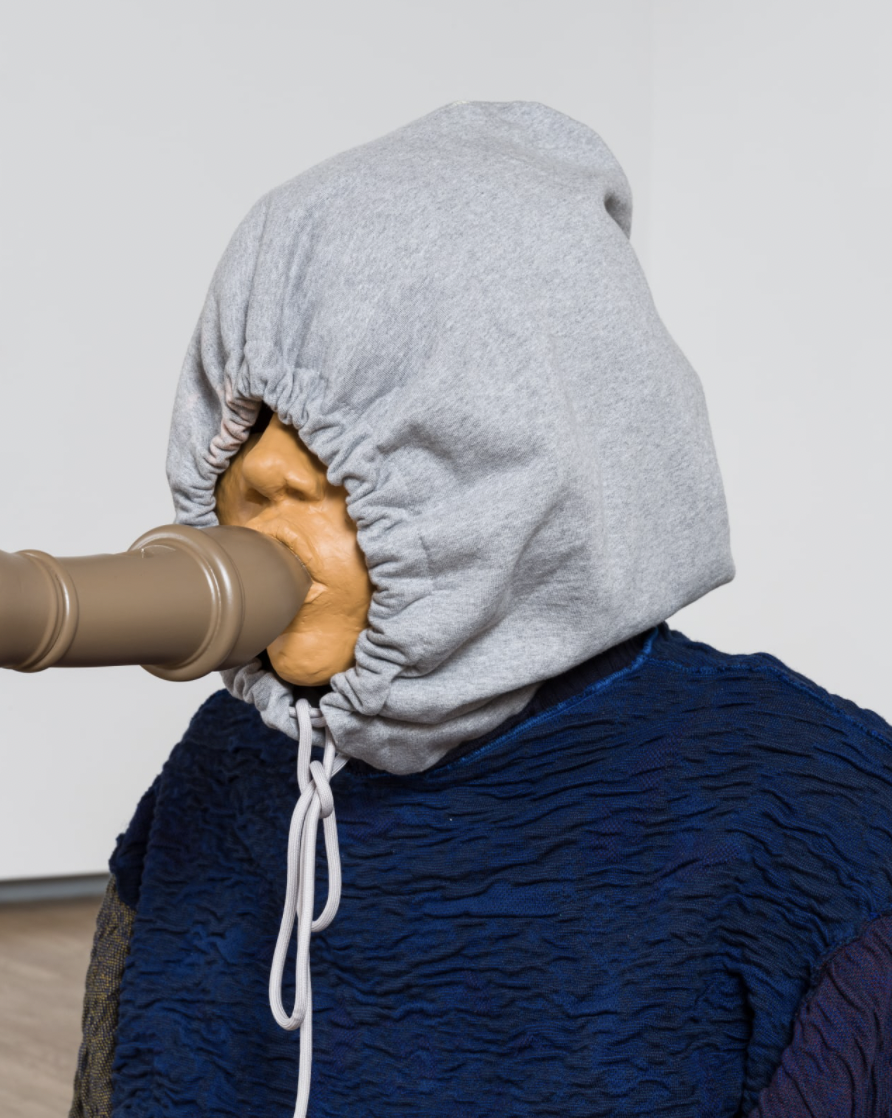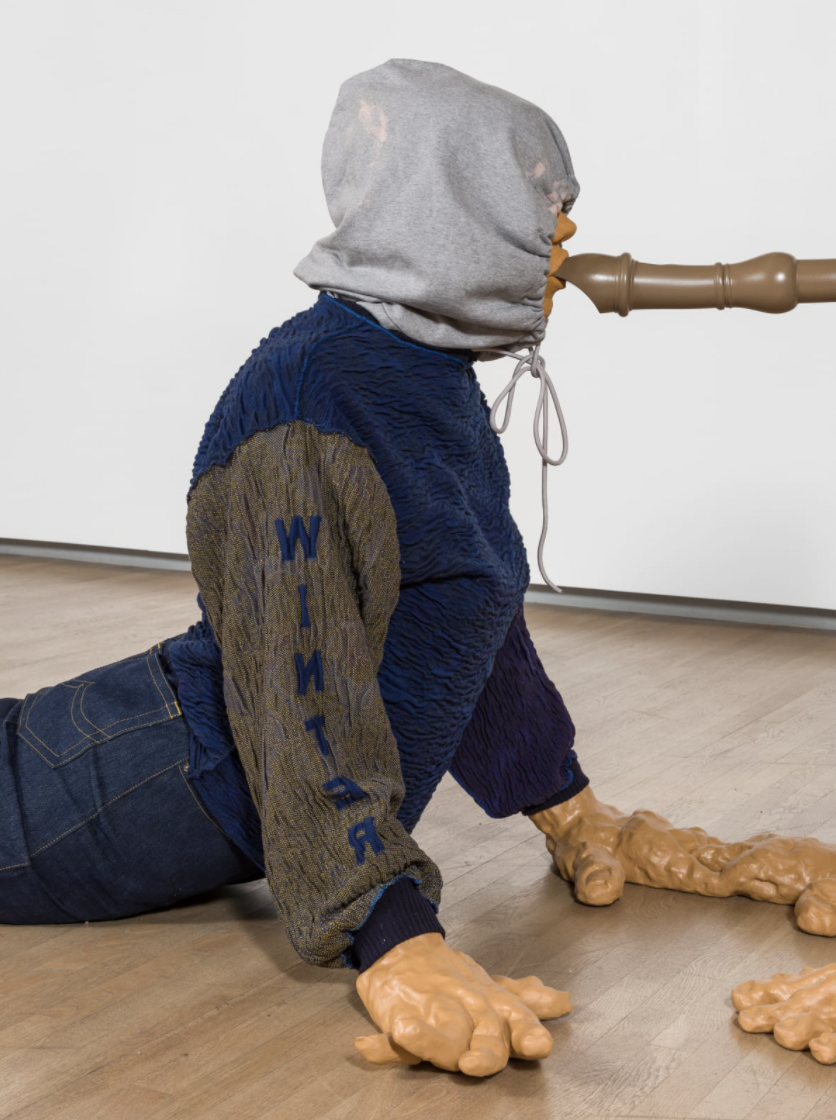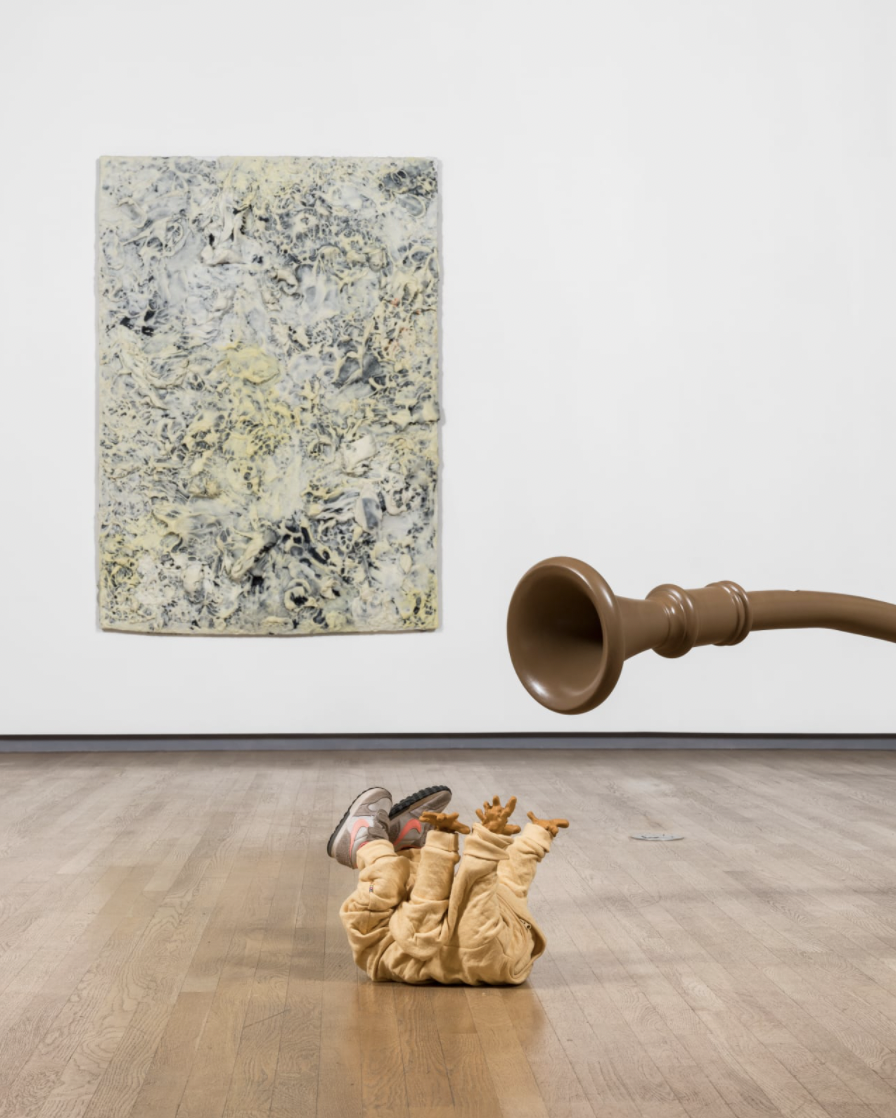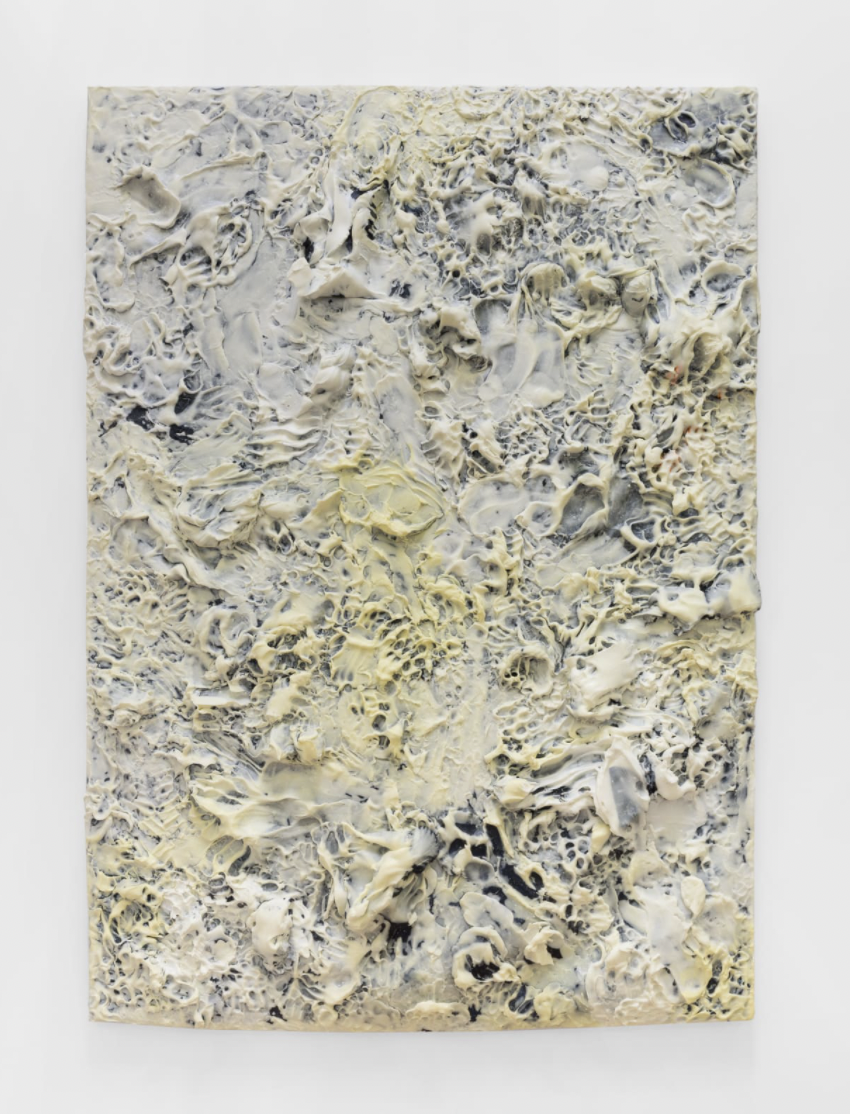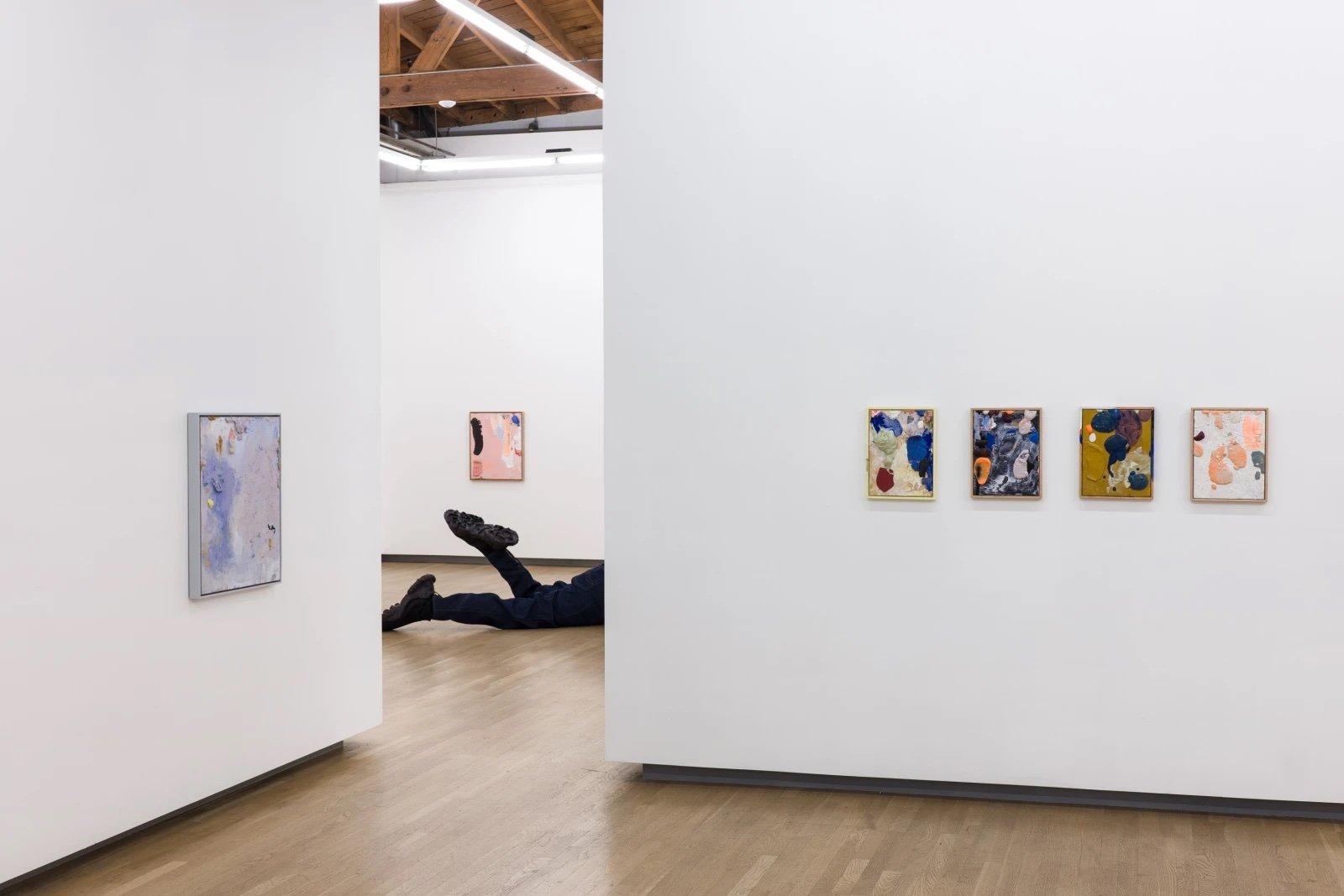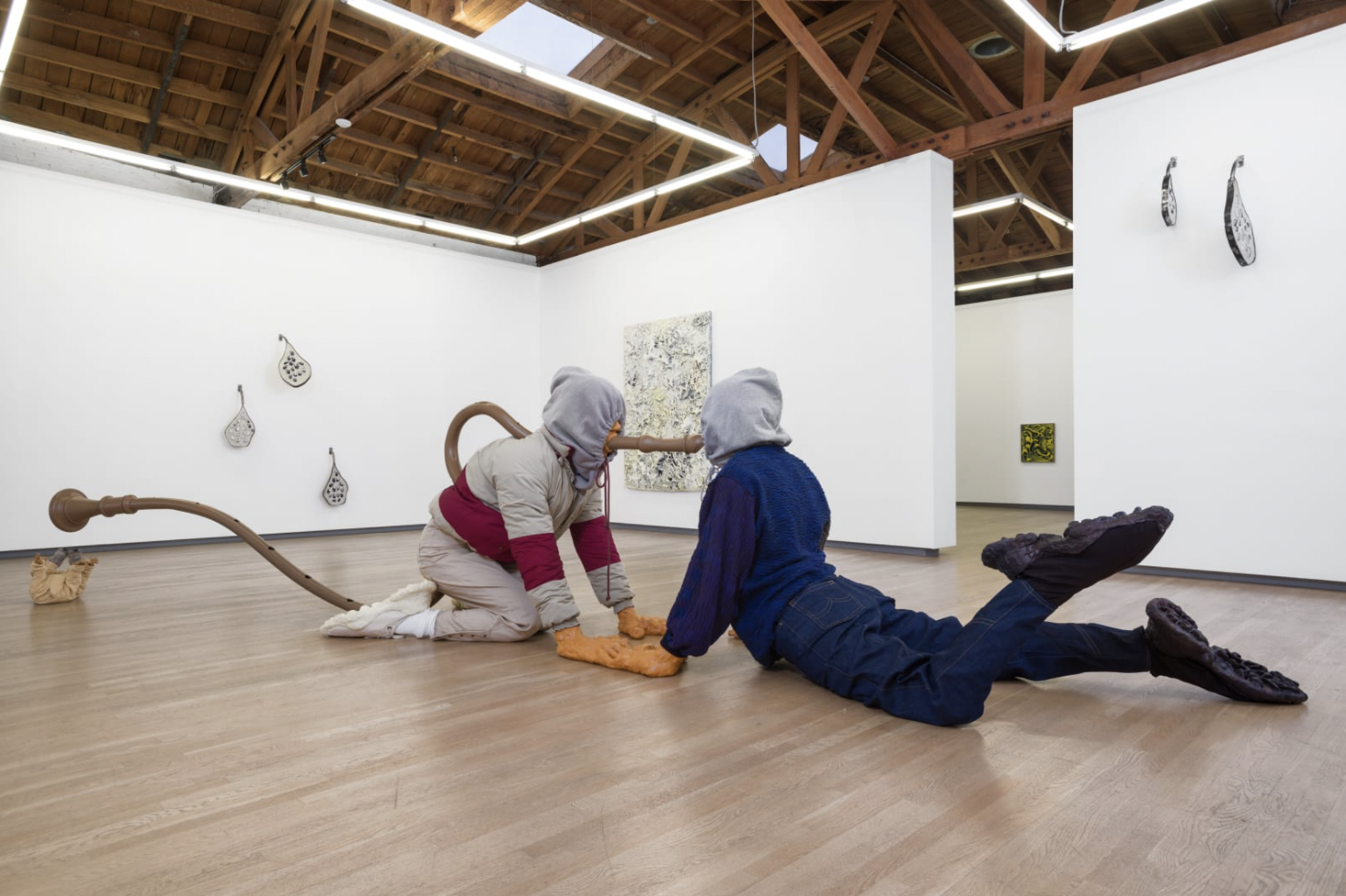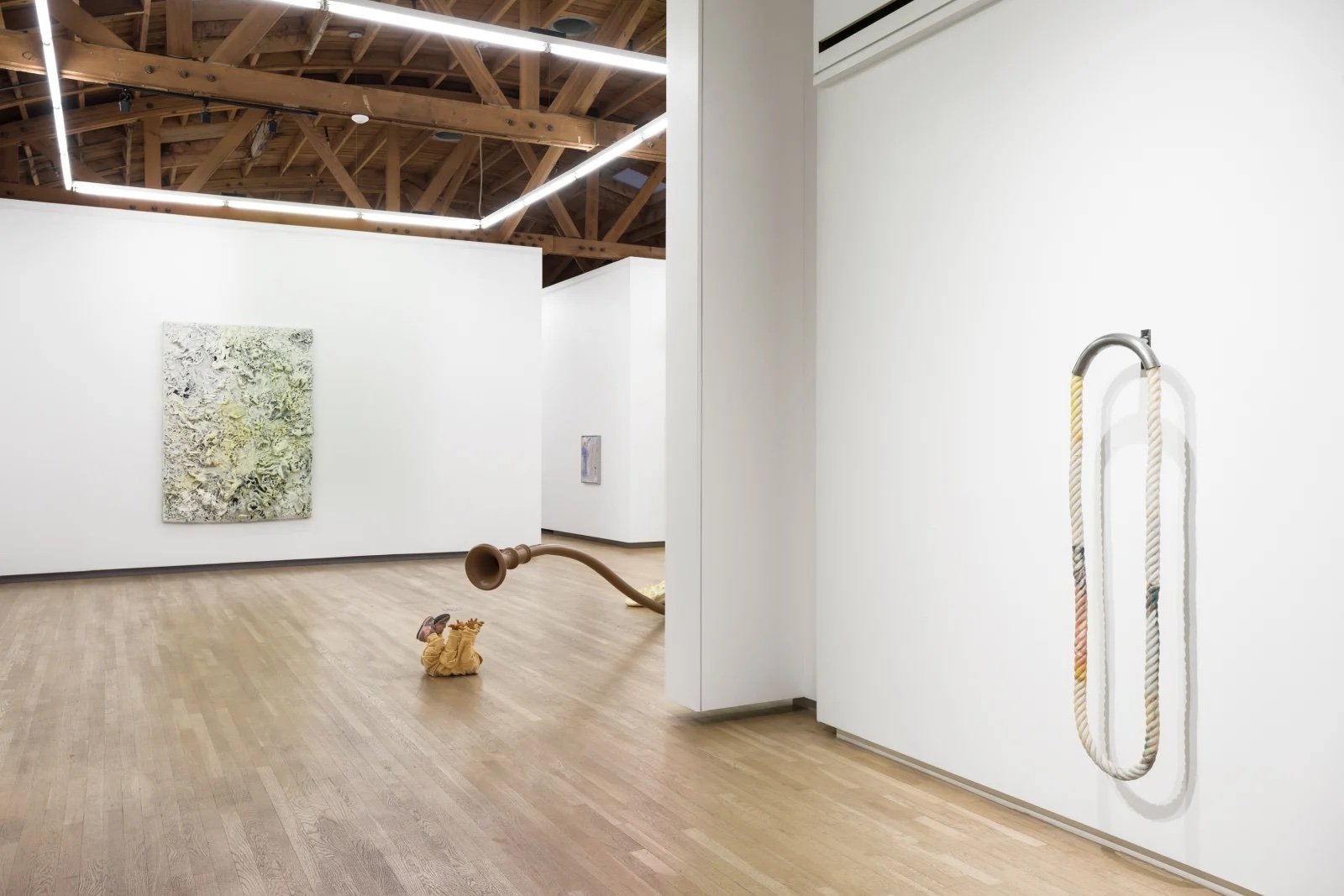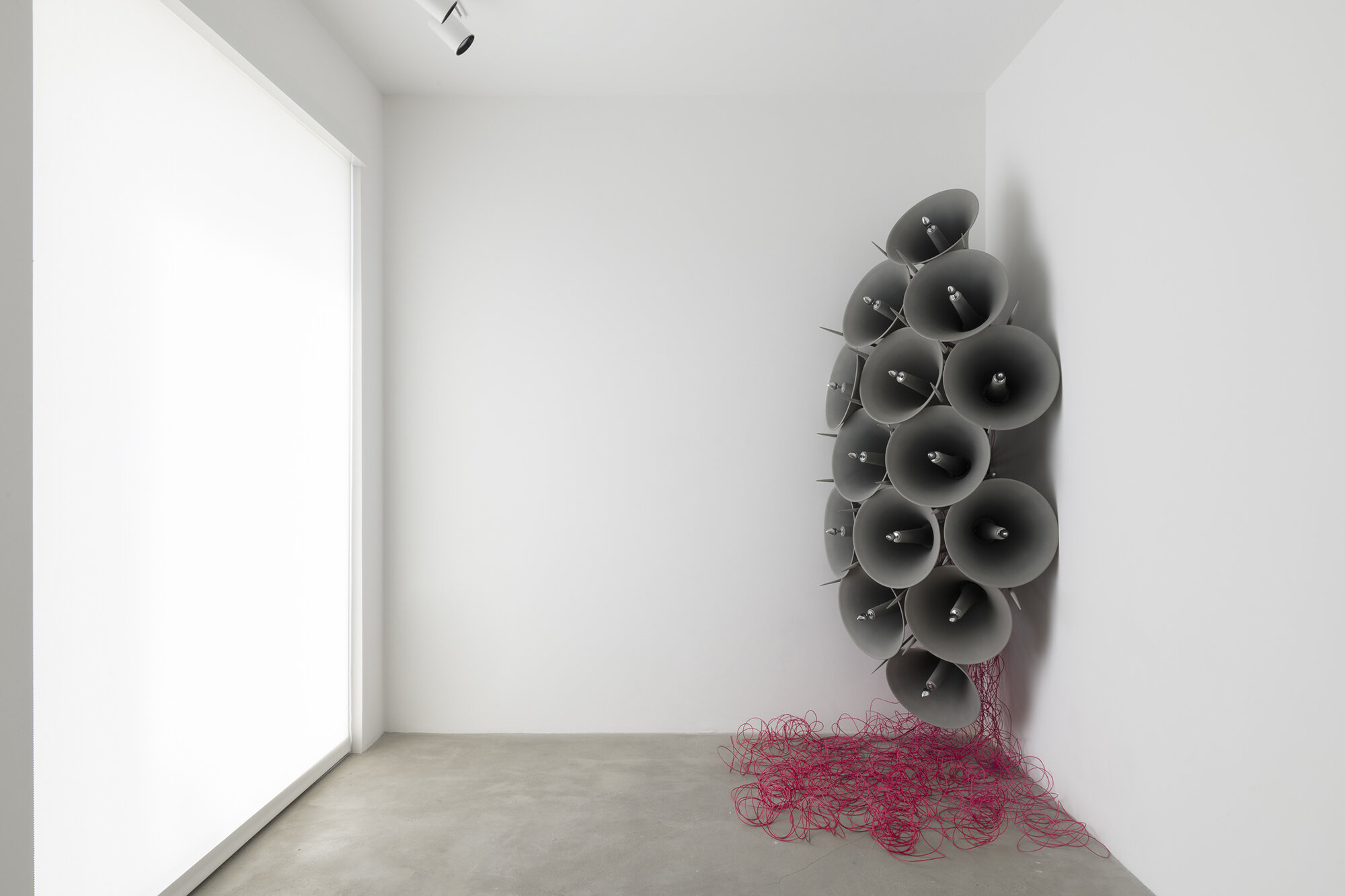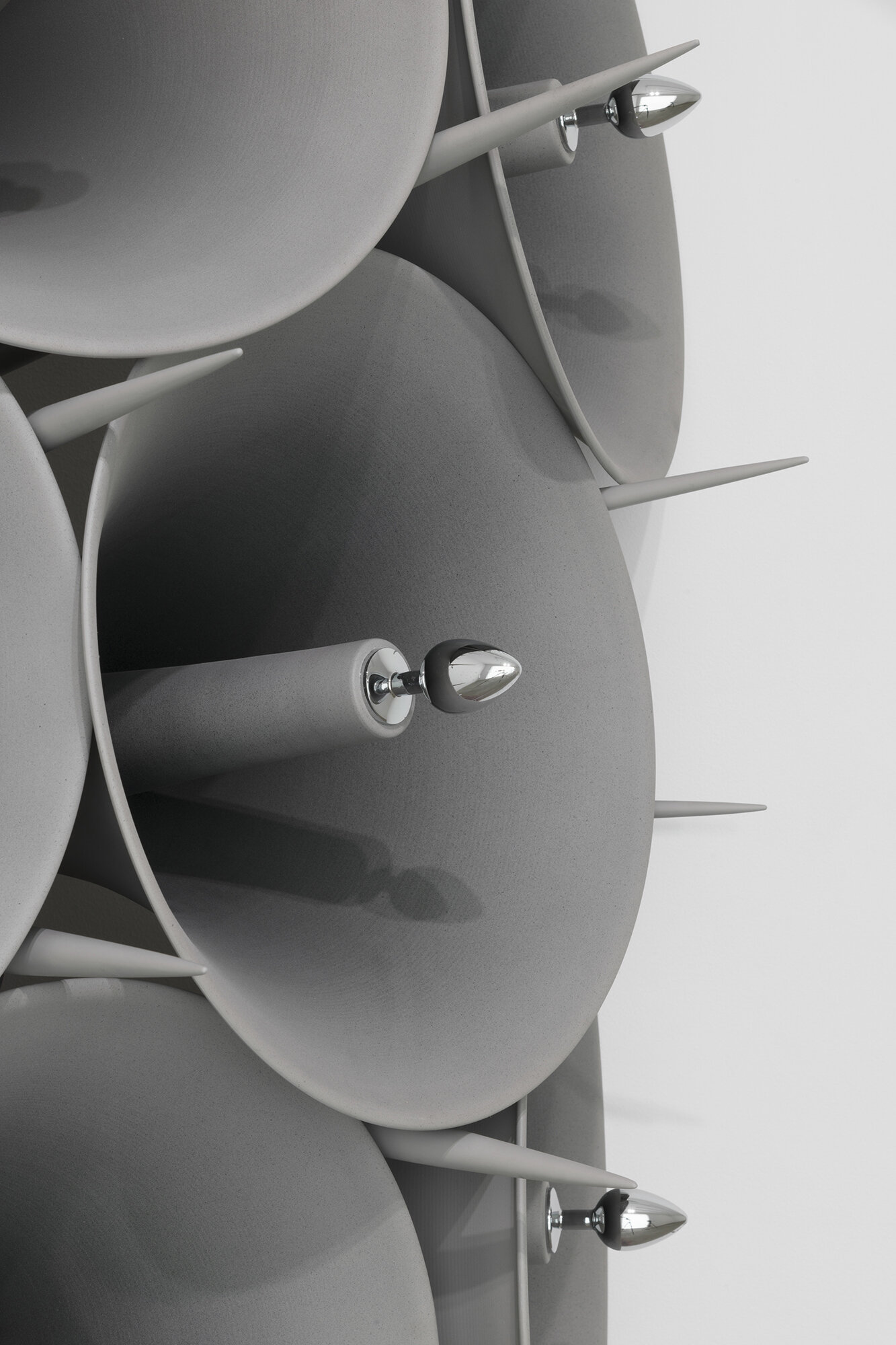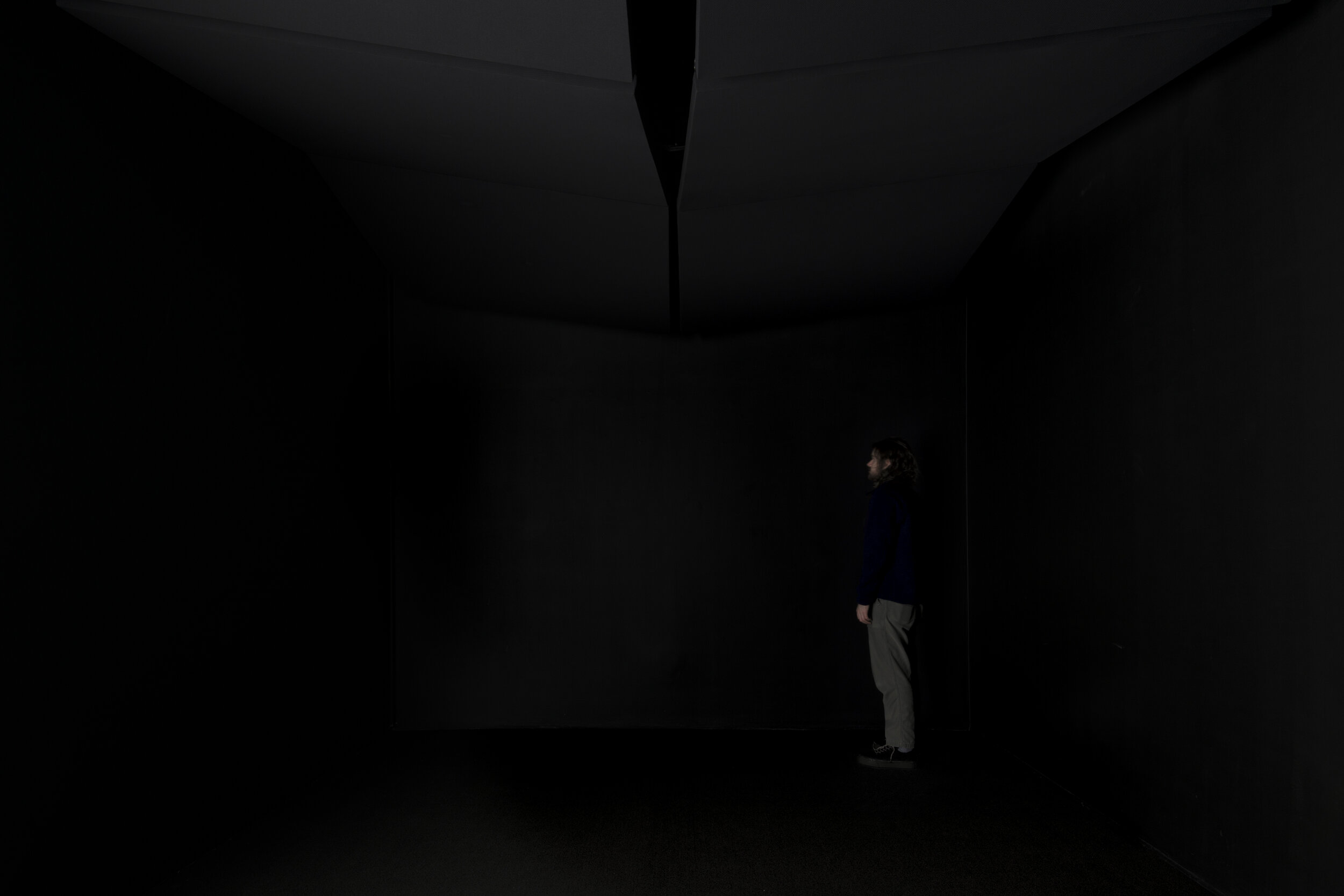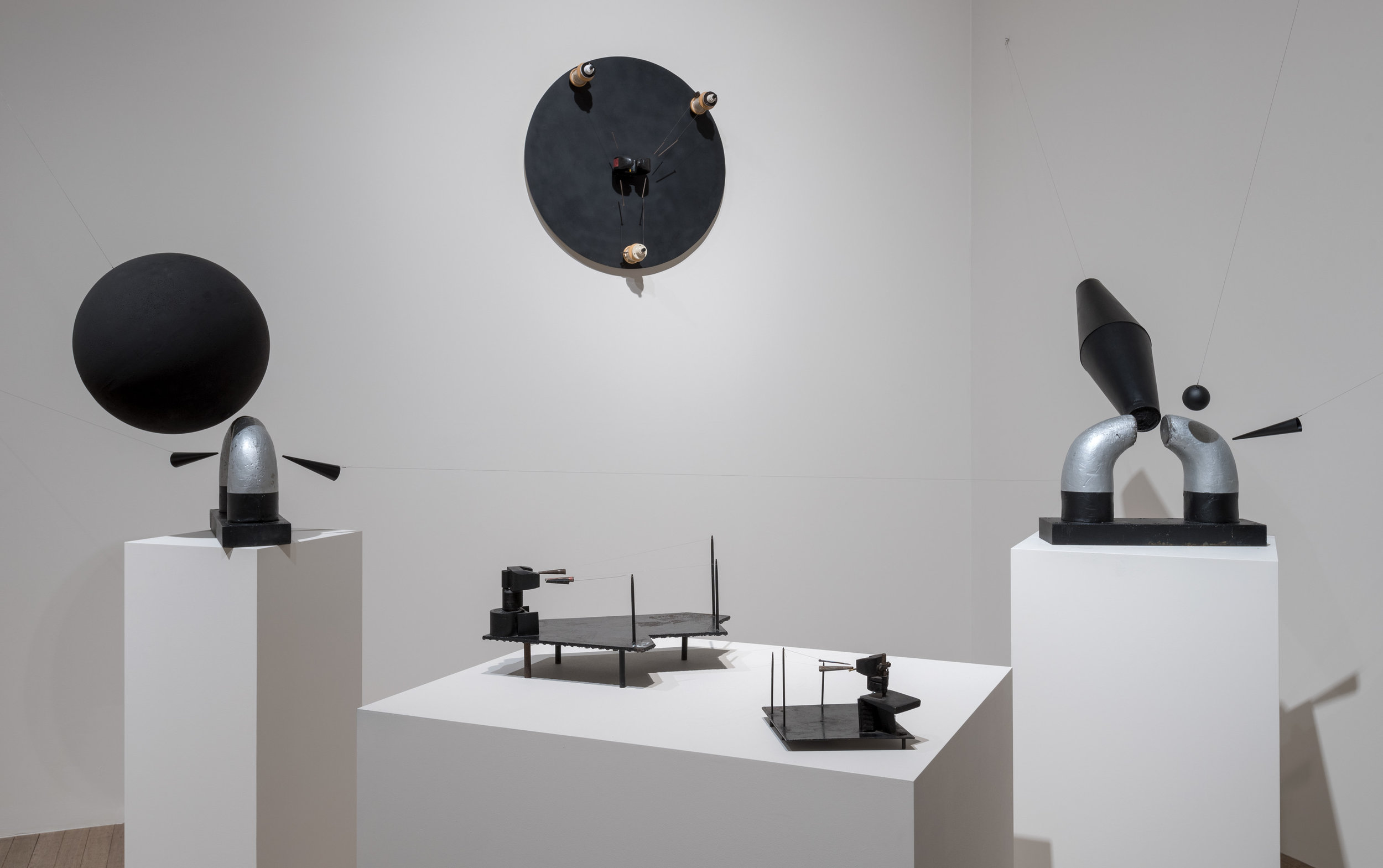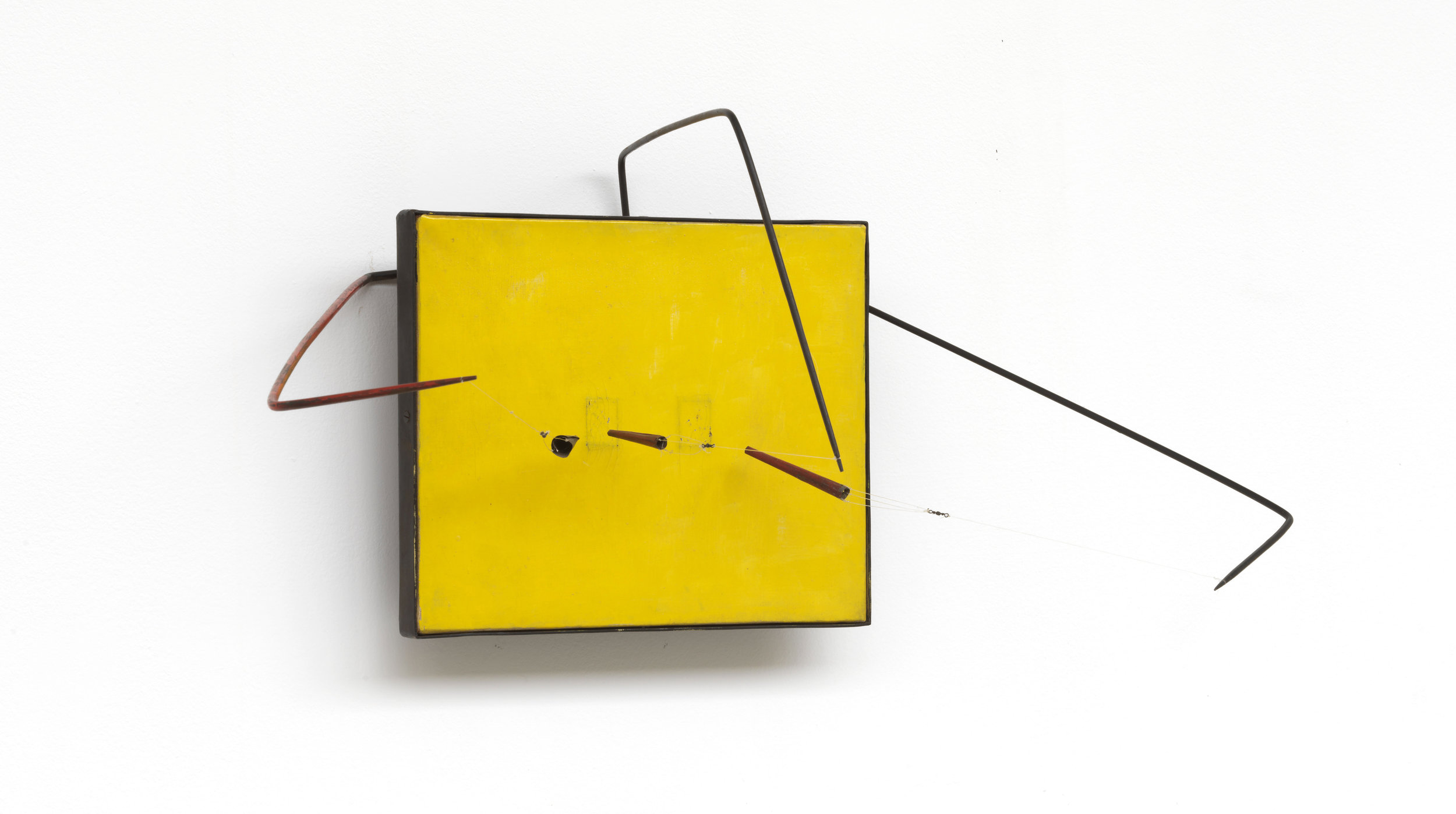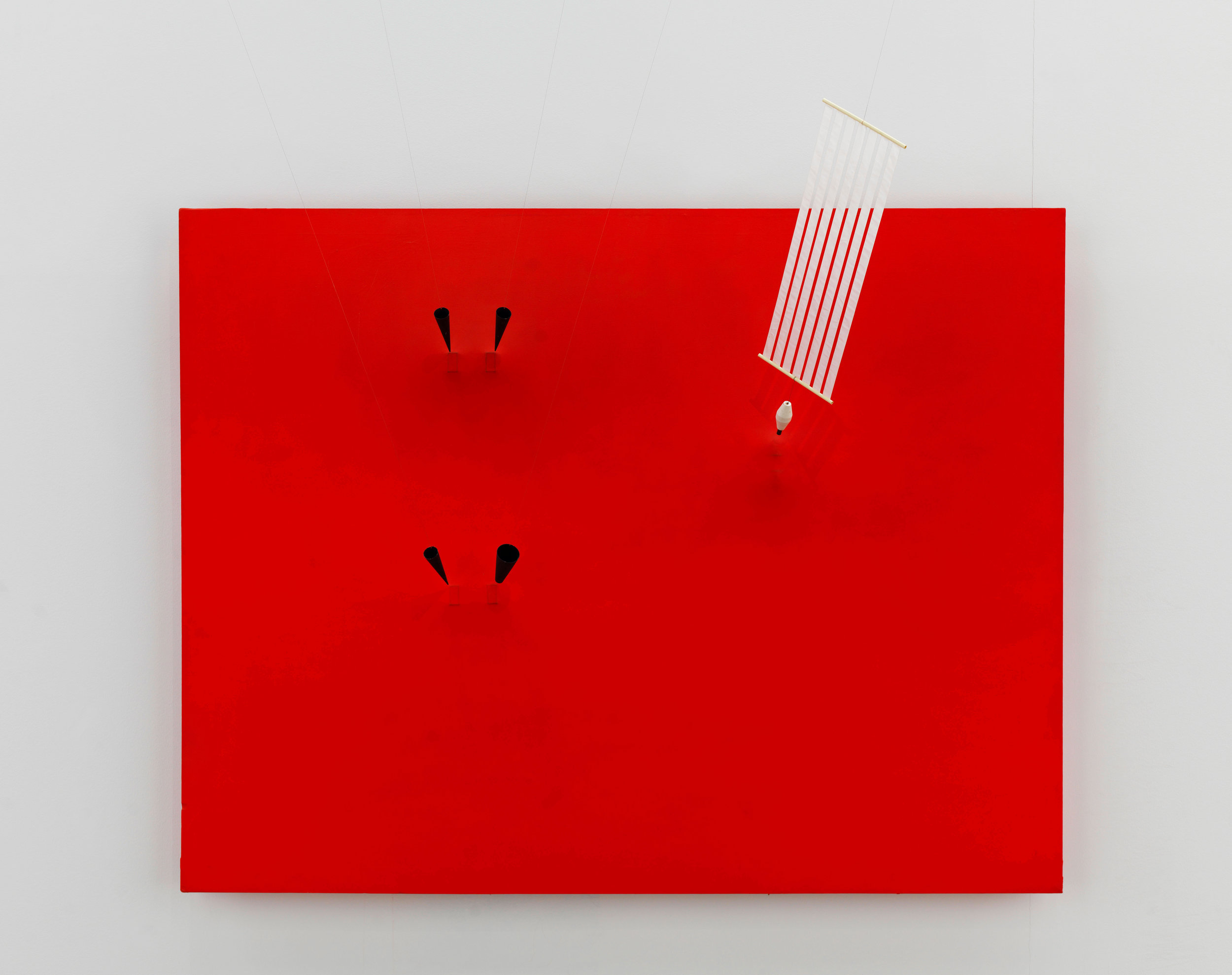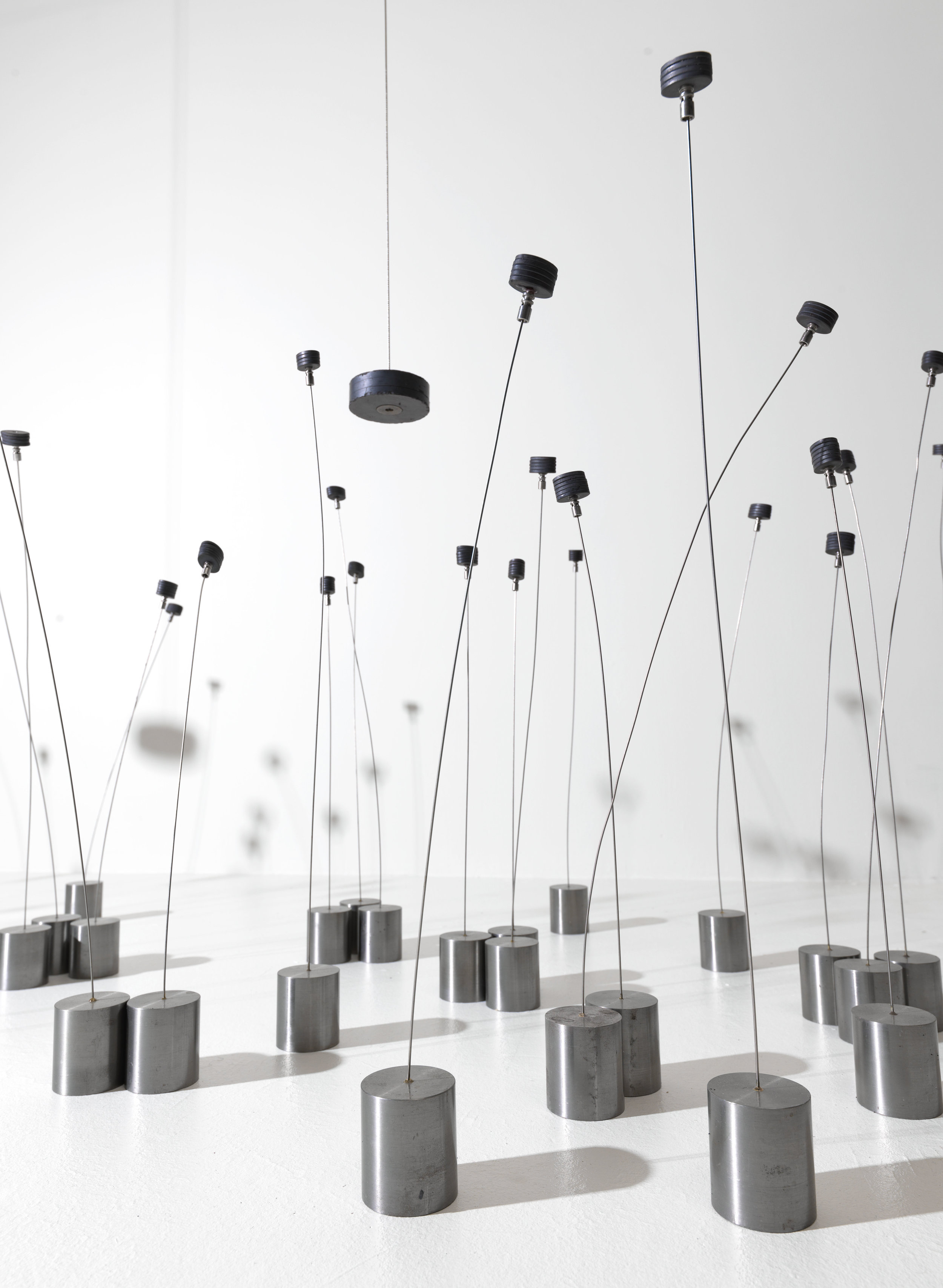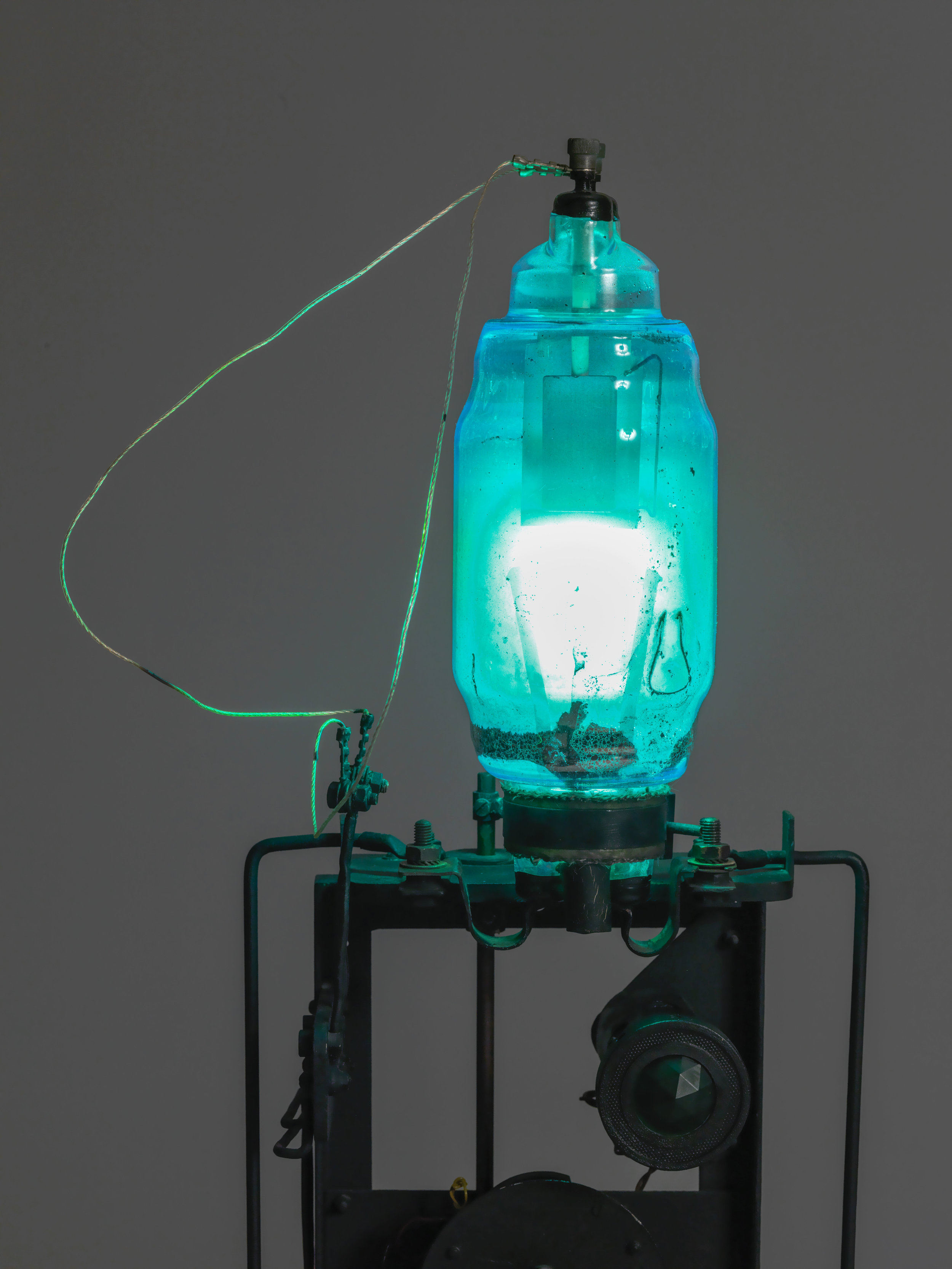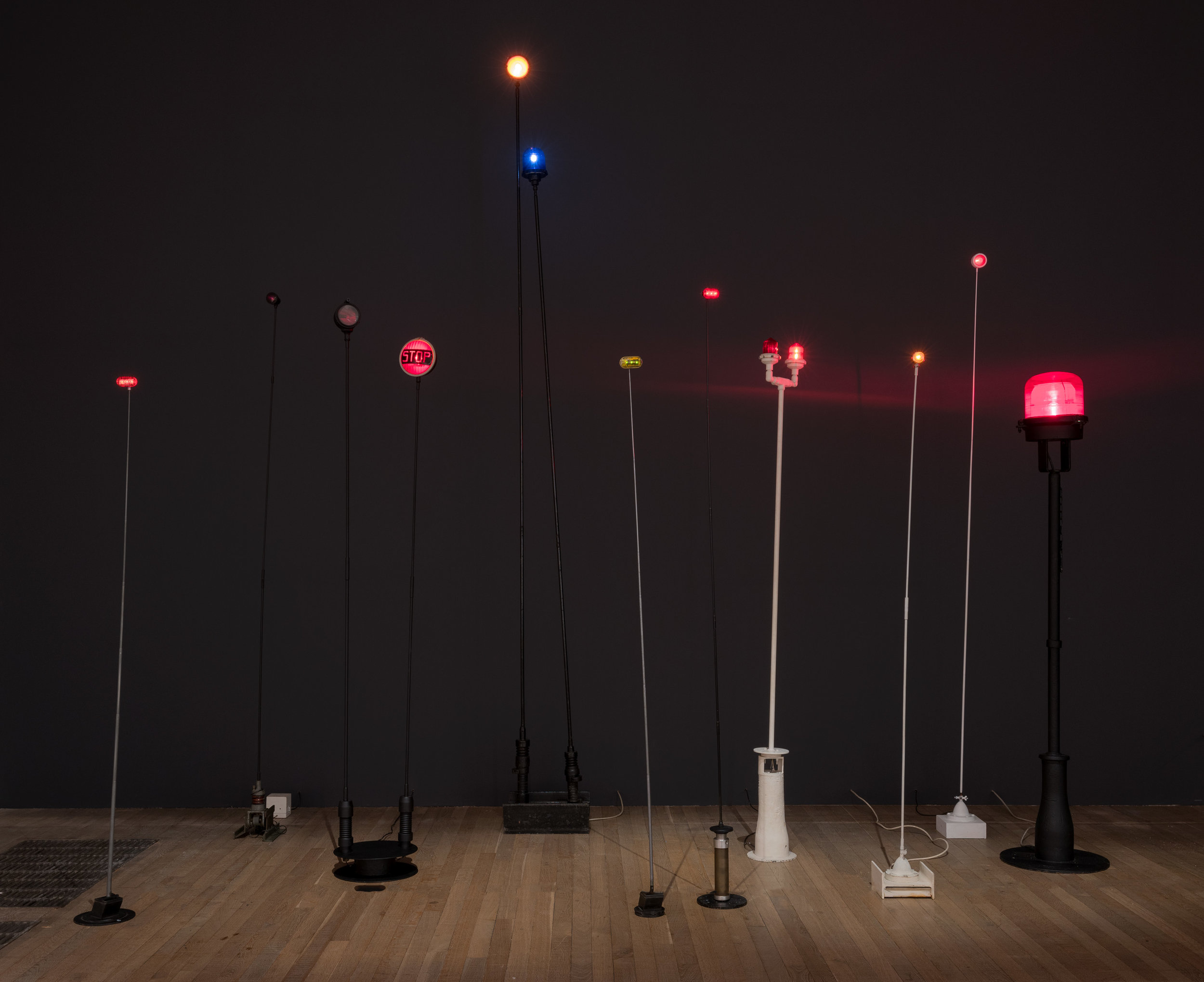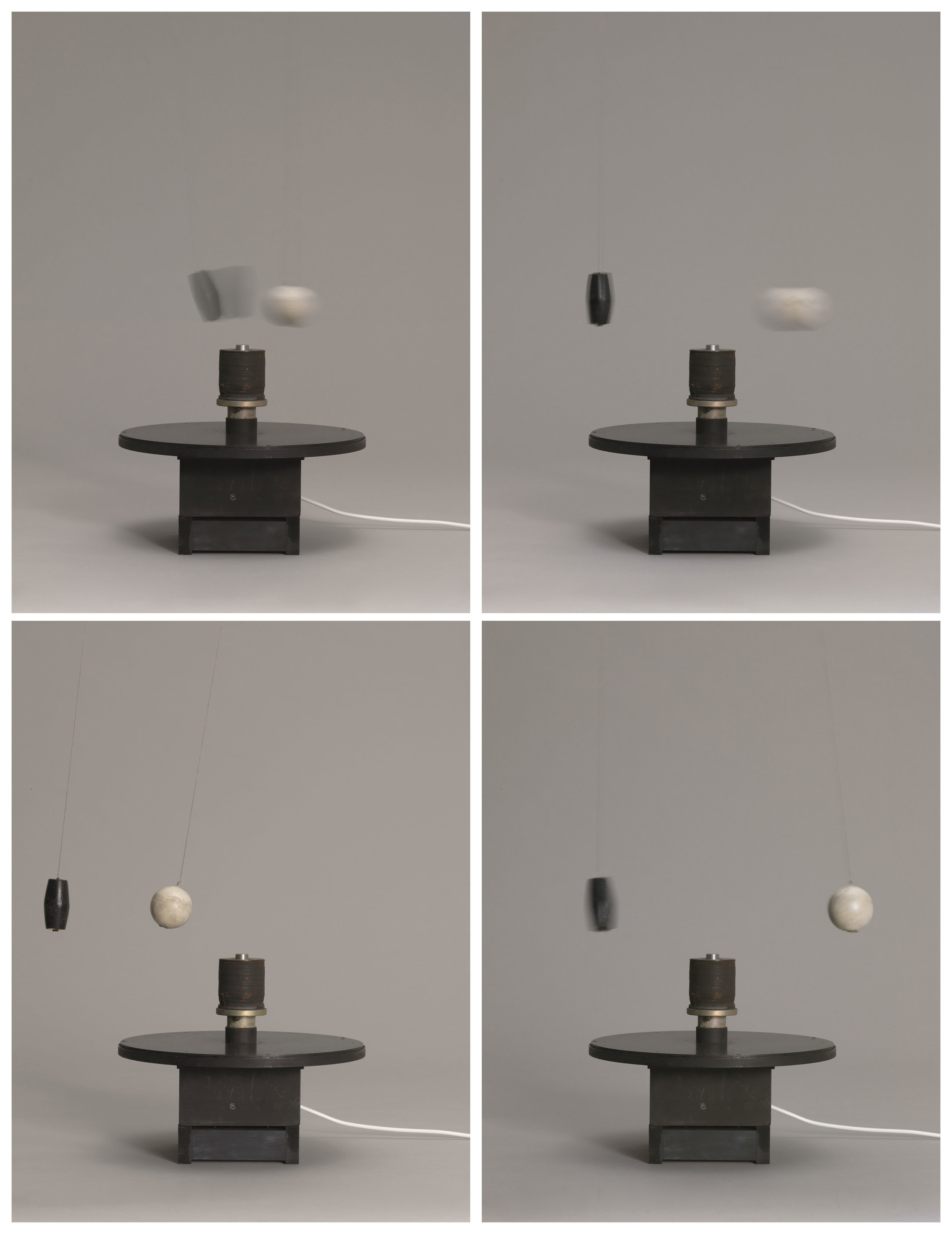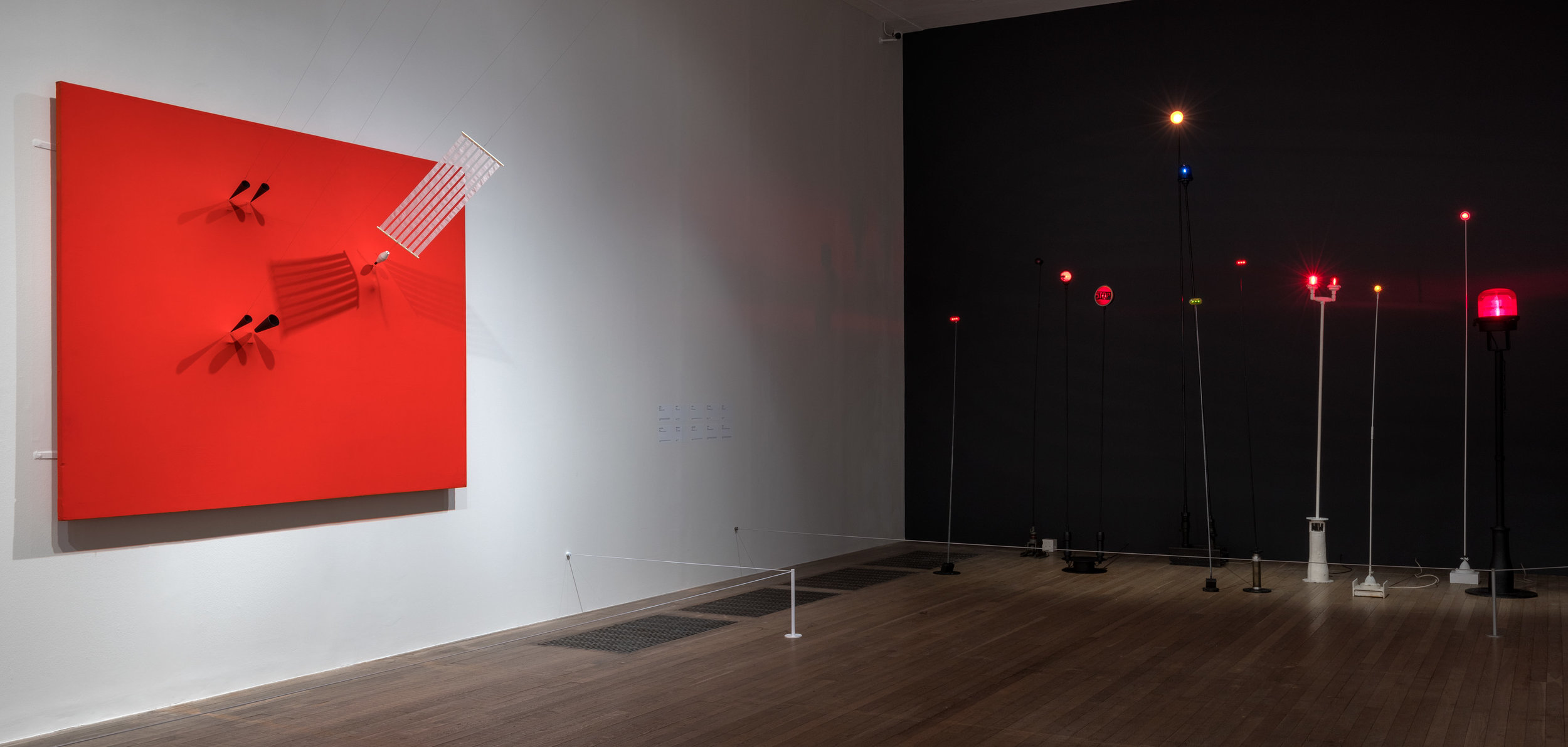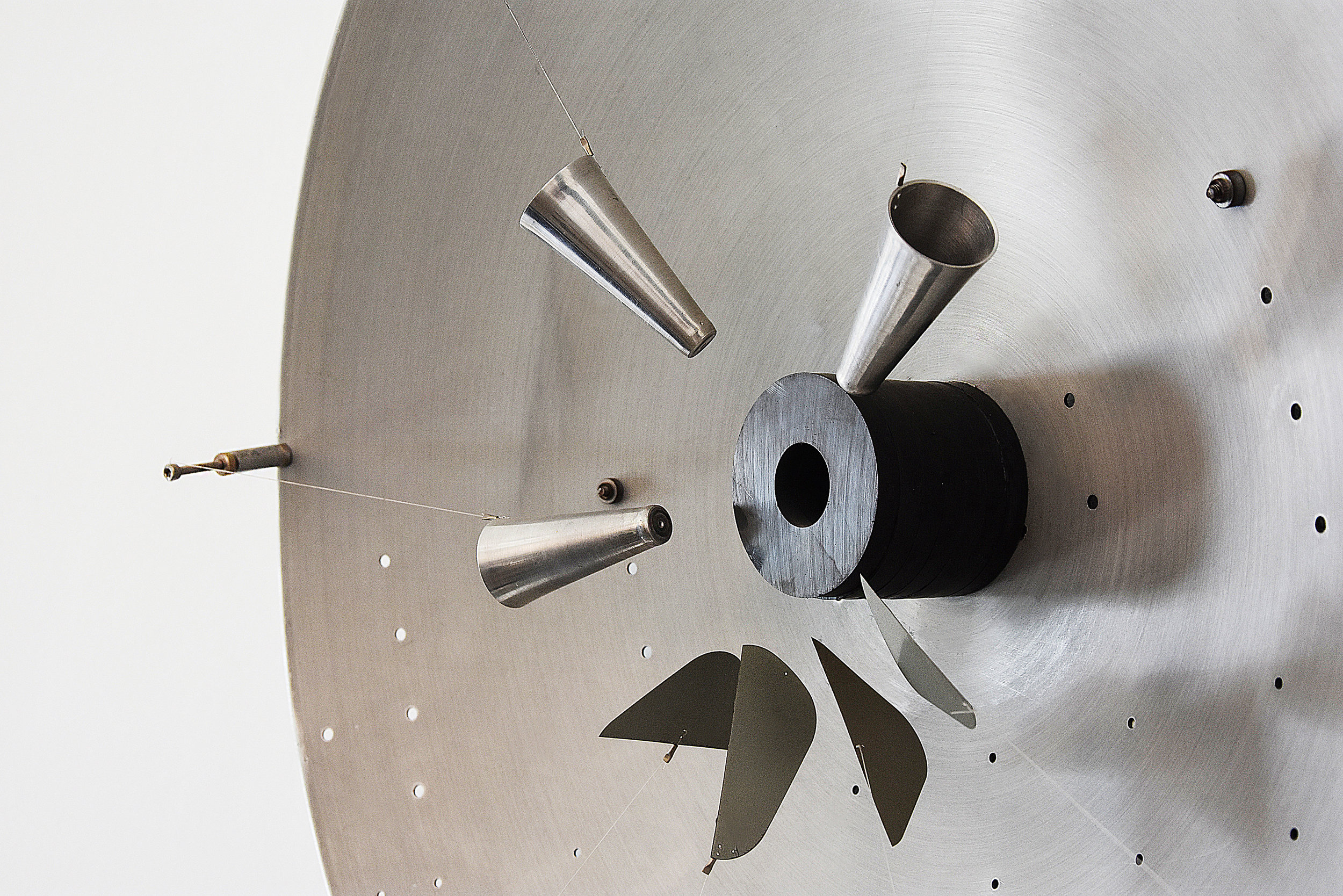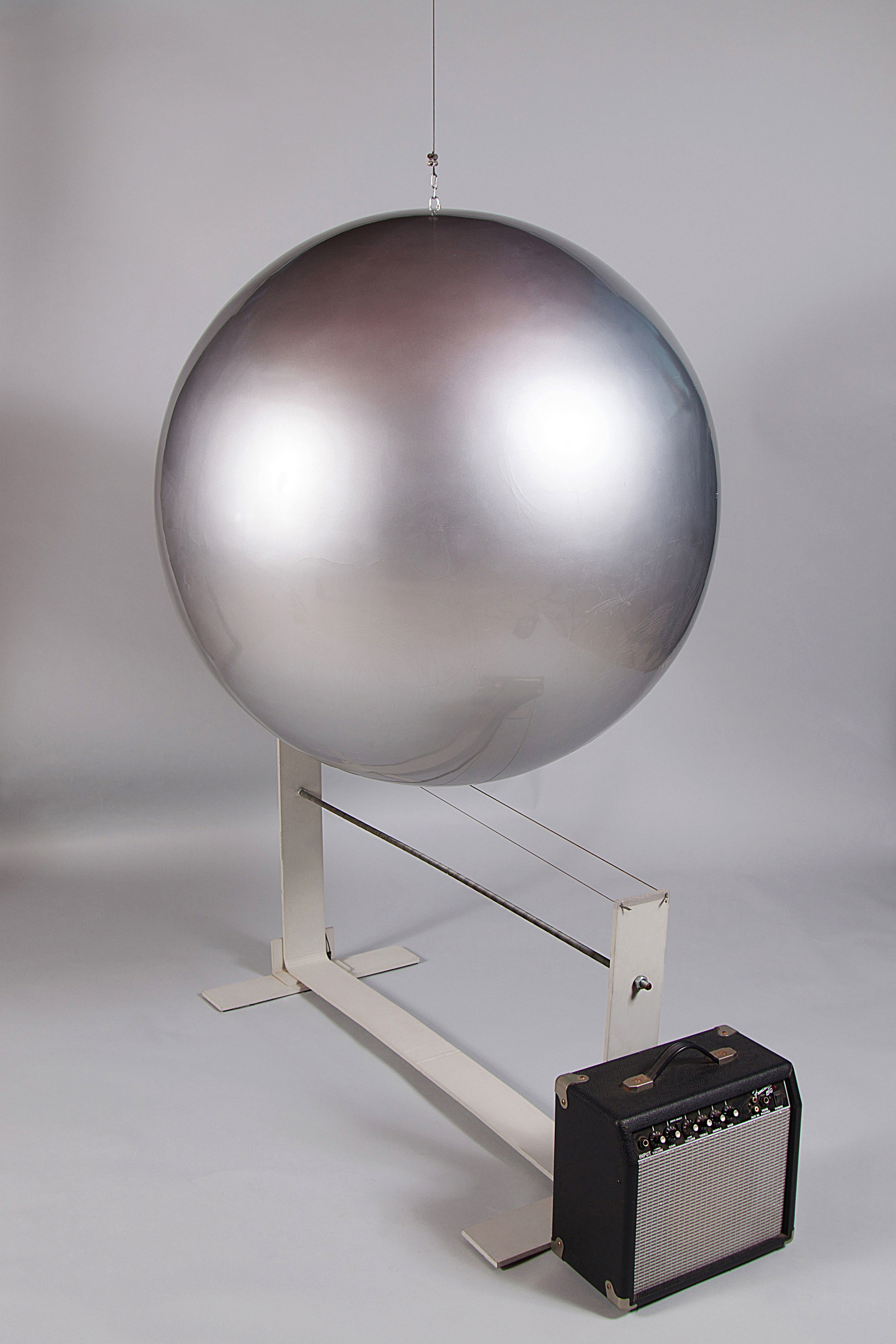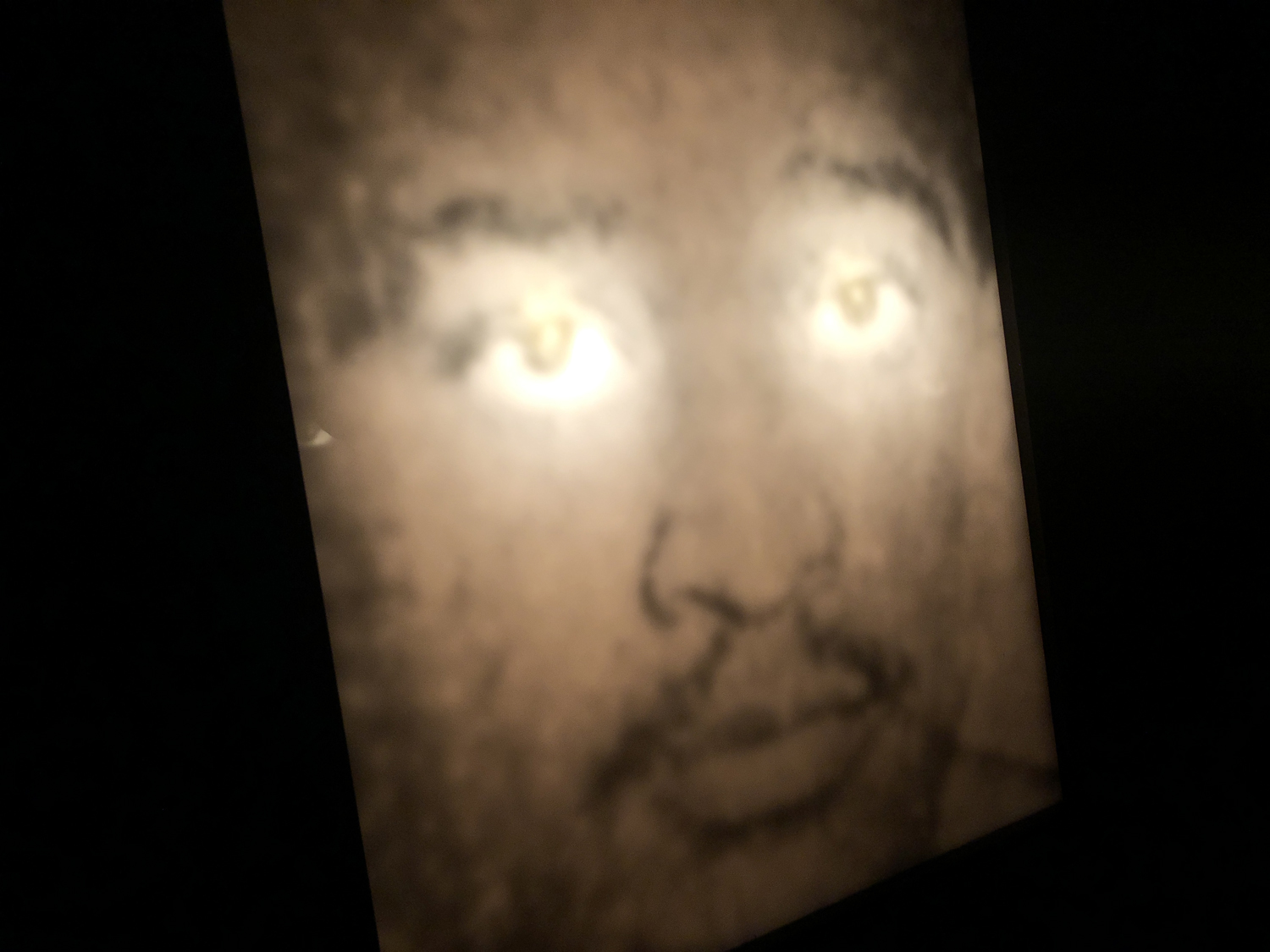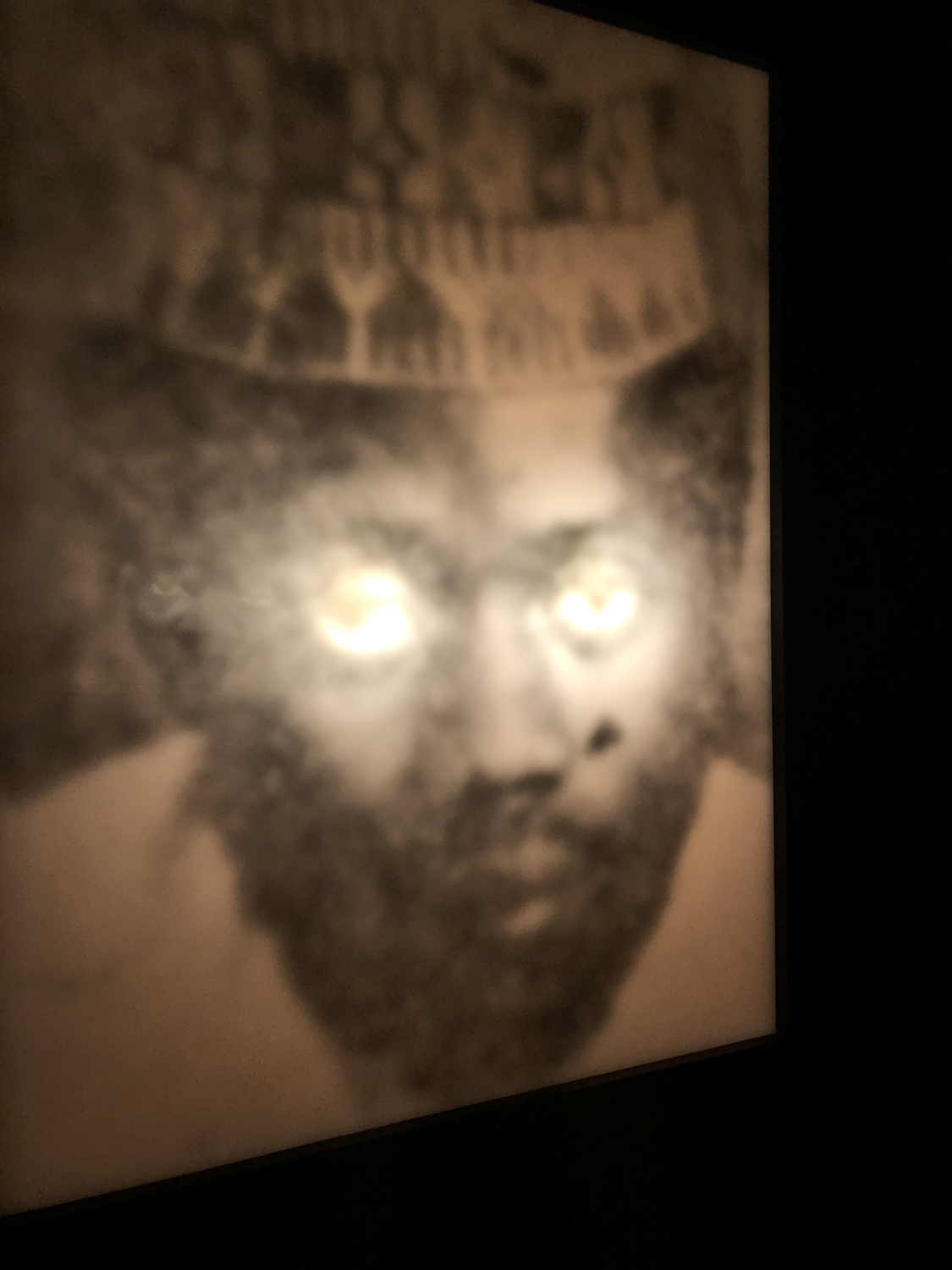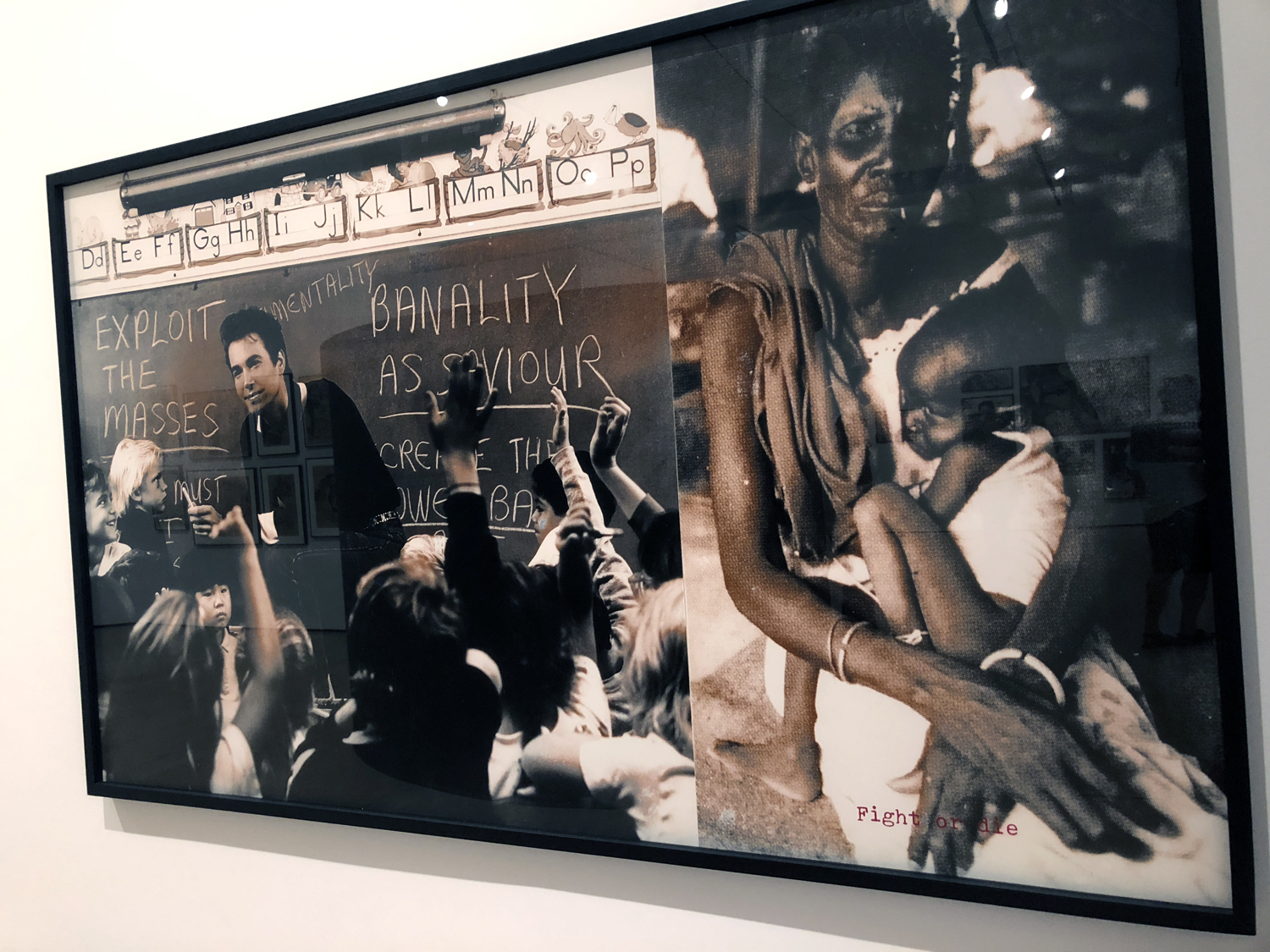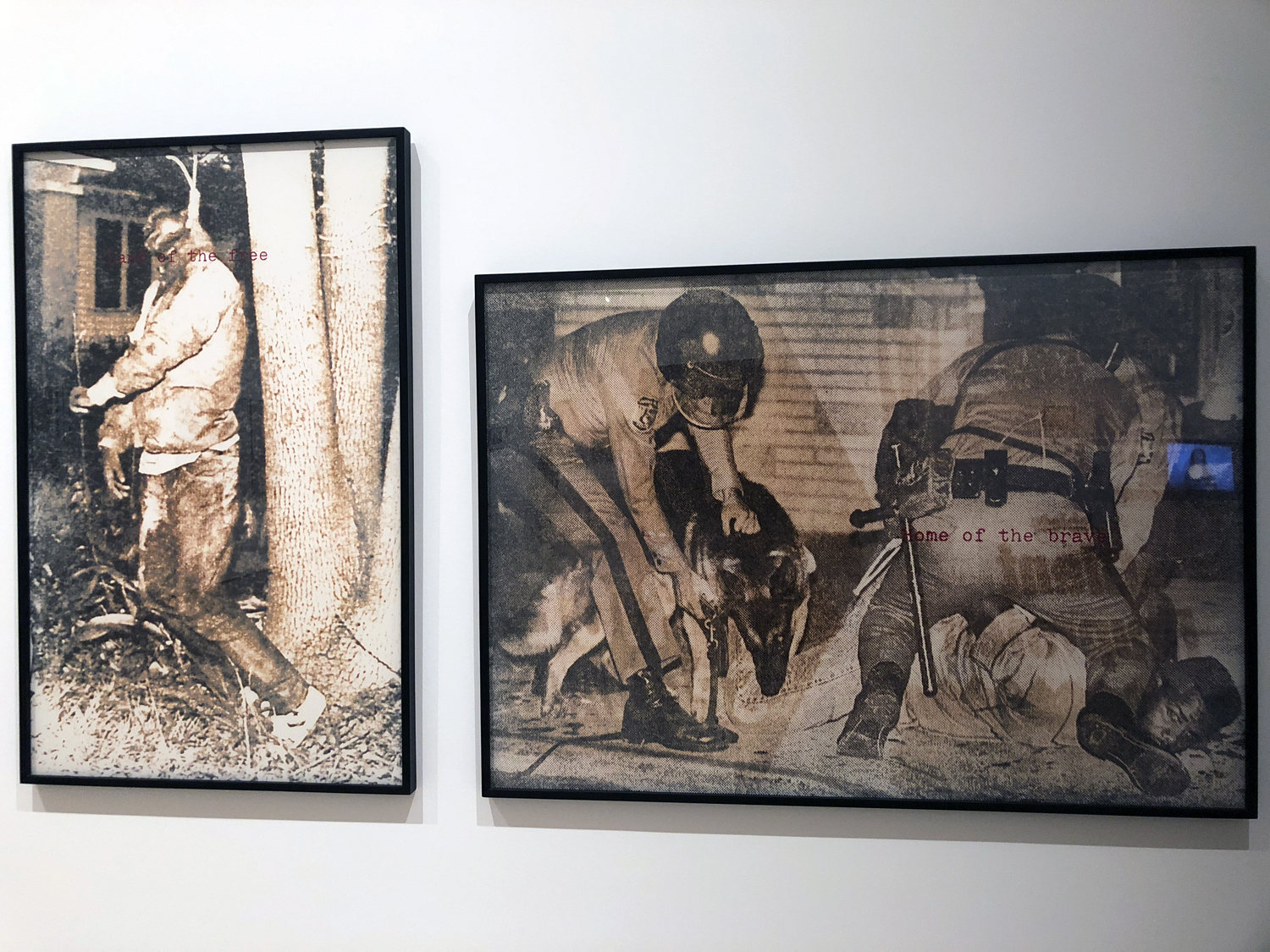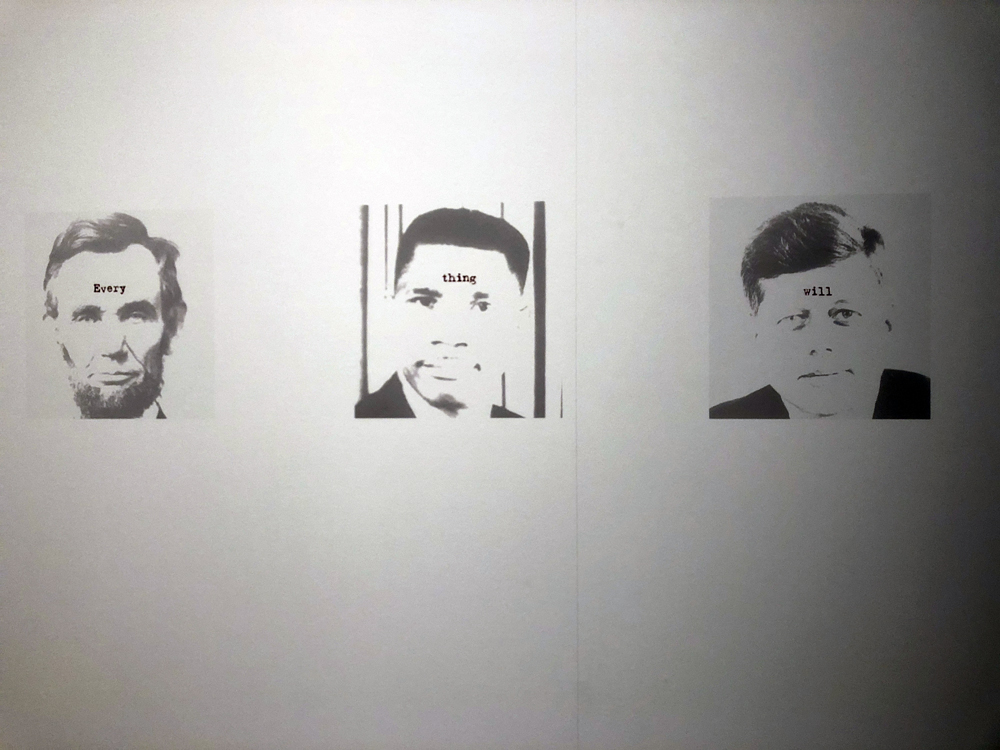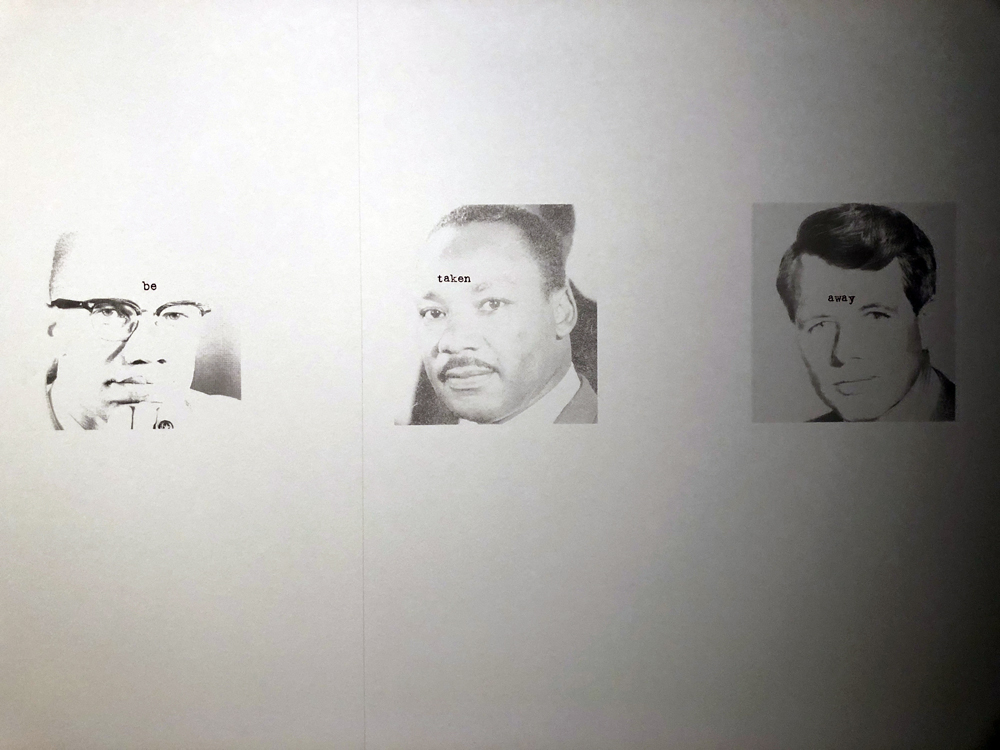jacket: GmbH, shirt: Theo’s own
Theodoulos Polyviou is an artist whose practice explores the multilayered spaces where queerness, spirituality, and cultural heritage overlap across physical and digital worlds. Often utilizing virtual reality (VR) technology, Theo’s work also features architectural and sculptural elements, text, and sound, resulting in installations that are at once intellectually deep and sensuous to experience. He has participated in numerous exhibitions and residencies throughout Europe, and has a forthcoming project in Lecce, Italy, later this year. I met Theo on the occasion of his recent exhibition Transmundane Economies at Künstlerhaus Bethanien in Berlin, where he has pursued a long-term artist residency. As an art critic, I’m usually hesitant and skeptical regarding the experience of art in virtual reality. But I found how Theo uses VR in Transmundane Economies to construct a “ritual space” that conjoins queerness, religion, and Cypriot cultural heritage to be profound and compelling. So I’ve met with him again to find out more. Read more.


